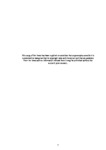Apophenoesis & the Origins of Creativity: Virtual Pattern Recognition, Error, Paths to Consciousness & Augmenting the Evolution of Self
| dc.contributor.supervisor | Ascott, Roy | |
| dc.contributor.author | Kazemzadeh, Max B. | |
| dc.contributor.other | School of Art, Design and Architecture | en_US |
| dc.date.accessioned | 2020-09-07T06:47:50Z | |
| dc.date.available | 2020-09-07T06:47:50Z | |
| dc.date.issued | 2020 | |
| dc.identifier | 10261420 | en_US |
| dc.identifier.uri | http://hdl.handle.net/10026.1/16228 | |
| dc.description | Erratum: the name Karl Conrad appears in the metadata abstract and on page 7 and page 19 of the file. This is an error and should read Klaus Conrad. LW (LDS) 20/10/20 | |
| dc.description.abstract |
This research defines apophenoesis as a convergent practical tool that can enhance one’s creative process by introducing deviations from the familiar in such a way to allow new creative pathways to form and result in new innovations. With foundations in Roy Ascott’s technoetics, which is defined as a “convergent field of practice that seeks to explore consciousness and connectivity through digital, telematic, chemical or spiritual means, embracing both interactive and psychoactive technologies, and the creative use of moistmedia” (Ascott, 2008, p. 1), apophenoesis more specifically provides a framework to demonstrate the value of disruption within technoetic art while demonstrating the relationships between creativity and perception. I have conducted an auto-ethnomethodological approach to analyze my own creative practice, which culminated in the following apophenoetic artworks: Gesture's of Change (2013), Dabarithms (2014) and Poseidon's Pull: Revisited (2018). Each artwork represents the wide range of impact apophenoesis has had once integrated into the formation of artistic intent, establishment of the creative process, as well as the content experienced within the work of art by participants and observers. Since apophenoesis has a direct relationship to perception, it can be used both as a tool within the creative process as well as a mechanism within the content of the experience, thereby generating experiences of apophenoesis for participants within each technoetic artwork. In addition to Henri Bergson, who thoroughly models the relationship of perception to one’s reality, and Leonardo DaVinci, who used apophenoesis within his creative practice, a pivotal contributor to this research is the German psychiatrist, Karl Conrad, who discovered the phenomenon and called it apophanie during his clinical analysis of injured soldiers returning from war that exhibited what he then believed to be pre-schizophrenic characteristics. Conrad describes apophanie as phenomenon where one over-attributes significance in reference to patternless stimuli. This research highlights how Conrad’s discovery evolved into the establishment of the apophenoetic model and its relationship to interactive media art practice, culminating in the discovery that these characteristics can be used to define a new category of innovative practice entitled apophenoetic art. Rooted in technoetic arts, this practice-based research will reveal that the disruption introduced in applying apophenoesis to one’s creative practice is a fundamental tool to producing exponential boosts in creative productivity. Since Conrad’s clinical research found detailed evidence of how the mind mistakenly attributes significance via the senses through the perception of actual stimuli, his research regarding apophanie as being characteristic of an illness has been challenged. This introduces the consideration that the phenomenon may actually be a common, naturally occurring experience within the mind of healthy individuals, and often occurs subconsciously as a disruption in perception. How Conrad chose to define apophanie reveal his interest in fostering cross-disciplinary research. When apophenie is used in creative practice, it can be transformed into apophenoesis, or a method for accessing creativity and extending creative practice. Further analysis of apophenoesis reveals essential contributions to understanding the roots of creativity, inspiration, innovative thought, learning and how one’s mind and body work to access creativity. | en_US |
| dc.language.iso | en | |
| dc.publisher | University of Plymouth | |
| dc.rights | Attribution-NonCommercial-NoDerivs 3.0 United States | * |
| dc.rights.uri | http://creativecommons.org/licenses/by-nc-nd/3.0/us/ | * |
| dc.subject | Apophenia | en_US |
| dc.subject | Apophany | en_US |
| dc.subject | Apophanie | en_US |
| dc.subject | Apophanoesis | en_US |
| dc.subject | Creativity | en_US |
| dc.subject | Innovation | en_US |
| dc.subject | Disruption | en_US |
| dc.subject | Interactivity | en_US |
| dc.subject | Art | en_US |
| dc.subject | Technology | en_US |
| dc.subject | Hardware | en_US |
| dc.subject | Software | en_US |
| dc.subject | Gaming | en_US |
| dc.subject | Social | en_US |
| dc.subject | Interaction | en_US |
| dc.subject | Interface | en_US |
| dc.subject | Culture | en_US |
| dc.subject | Perception | en_US |
| dc.subject | Error | en_US |
| dc.subject | Misperception | en_US |
| dc.subject.classification | PhD | en_US |
| dc.title | Apophenoesis & the Origins of Creativity: Virtual Pattern Recognition, Error, Paths to Consciousness & Augmenting the Evolution of Self | en_US |
| dc.type | Thesis | |
| plymouth.version | publishable | en_US |
| dc.identifier.doi | http://dx.doi.org/10.24382/1030 | |
| dc.identifier.doi | http://dx.doi.org/10.24382/1030 | |
| dc.rights.embargoperiod | No embargo | en_US |
| dc.type.qualification | Doctorate | en_US |
| rioxxterms.version | NA |
Files in this item
This item appears in the following Collection(s)
-
01 Research Theses Main Collection
Research Theses Main



